The Successful Hunt by Vicki Santello (USA).
When we first spotted him, he was hunting from the cover of a boulder along the riverbank.
His strategy seemed straightforward.
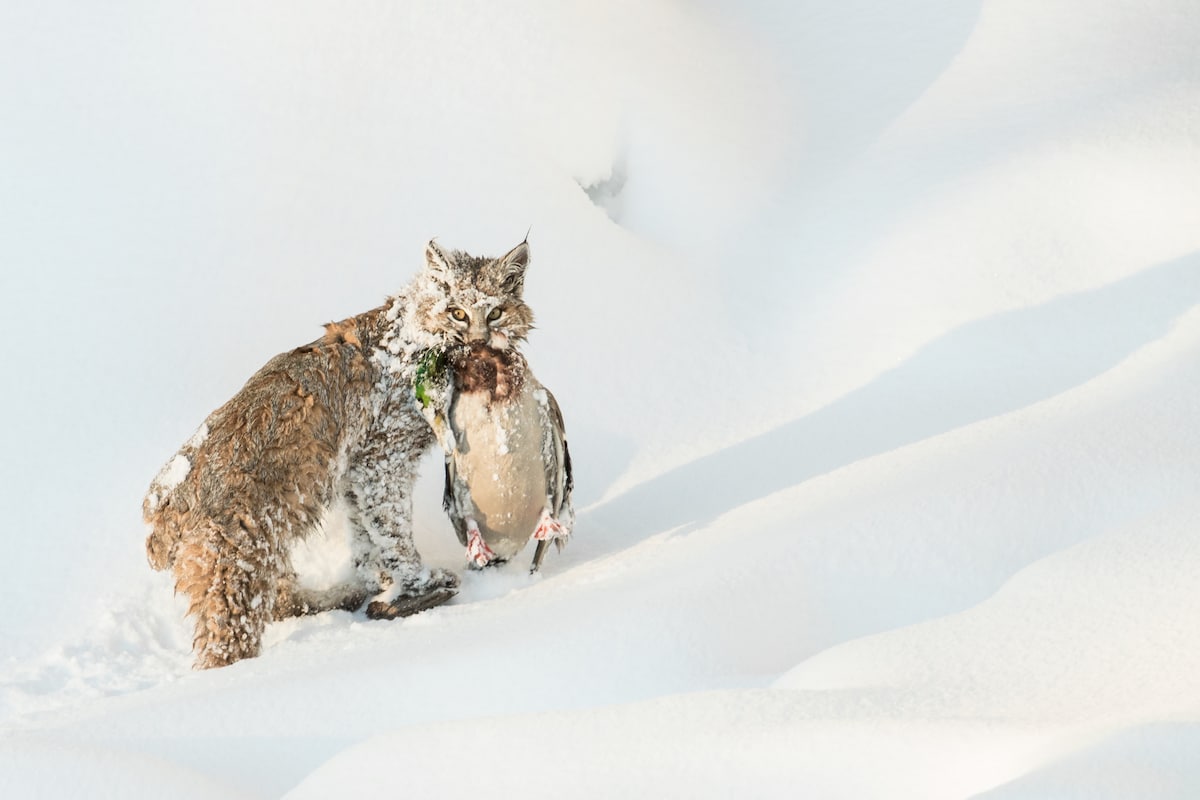
“The Successful Hunt” by Vicki Santello (USA). WET Gold Award Winner.Subject: Bobcat Lynx rufusOne of the highlights of my 2017 trip to Yellowstone National Park was the four hours I spent watching this bobcat hunt. When we first spotted him, he was hunting from the cover of a boulder along the riverbank. His strategy seemed straightforward. He was using the boulder as camouflage and as solitary ducks floated by him, he would try to grab them at the river edge. After numerous unsuccessful attempts, he changed strategies. He moved to a knoll above the river about 25 meters away. To get there, he used the snowbanks as cover to remain undetected. Once he attained that vantage point, he had the advantage of being out of view of his prey as well as height. Within minutes he launched himself off the knoll onto an unsuspecting mallard in the water below. Chaos ensued before the drenched bobcat emerged from the water with his kill. He climbed the riverbank with the mallard firmly clenched in his mouth and retreated into the woods. I took this image in the few fleeting seconds when he looked across the river on his way to a more private place.
After numerous unsuccessful attempts, he changed strategies.
He moved to a knoll above the river about 25 meters away.
To get there, he used the snowbanks as cover to remain undetected.
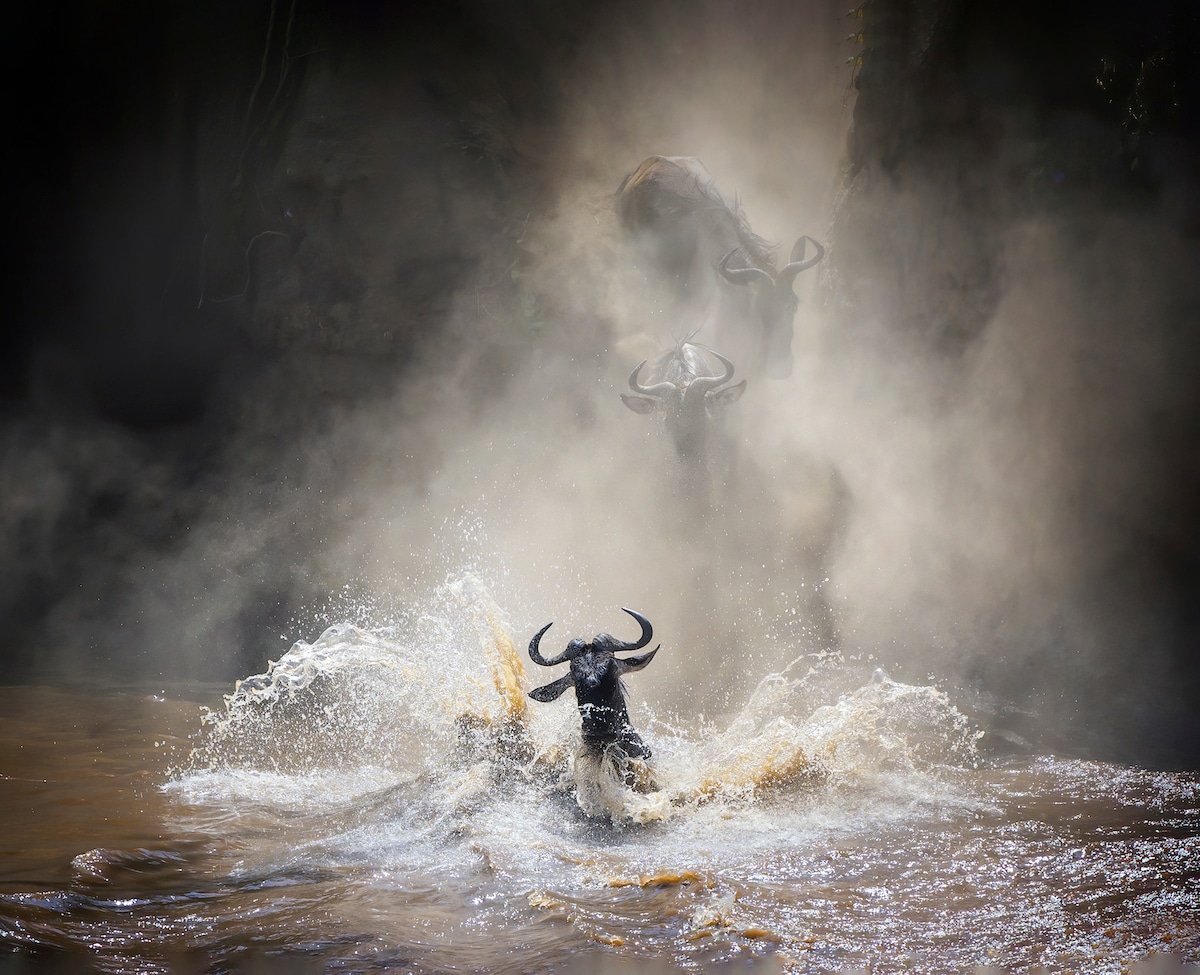
“Splash Down” by Vicki Jauron (USA). WET Silver Award Winner.Subject: Blue Wildebeest Connochaetes taurinusWhen we saw the wildebeest gathering at the Mara River, we assessed the situation and determined it would be a much better opportunity to see them from the other side. We raced across the plains, crossed the river and an hour or so later were positioned perfectly to see them crossing toward us through a very steep chute splashing into the river and crossing in front of us. It was one of the most memorable moments I’ve had on safari.
Within minutes he launched himself off the knoll onto an unsuspecting mallard in the water below.
Chaos ensued before the drenched bobcat emerged from the water with his kill.
He climbed the riverbank with the mallard firmly clenched in his mouth and retreated into the woods.
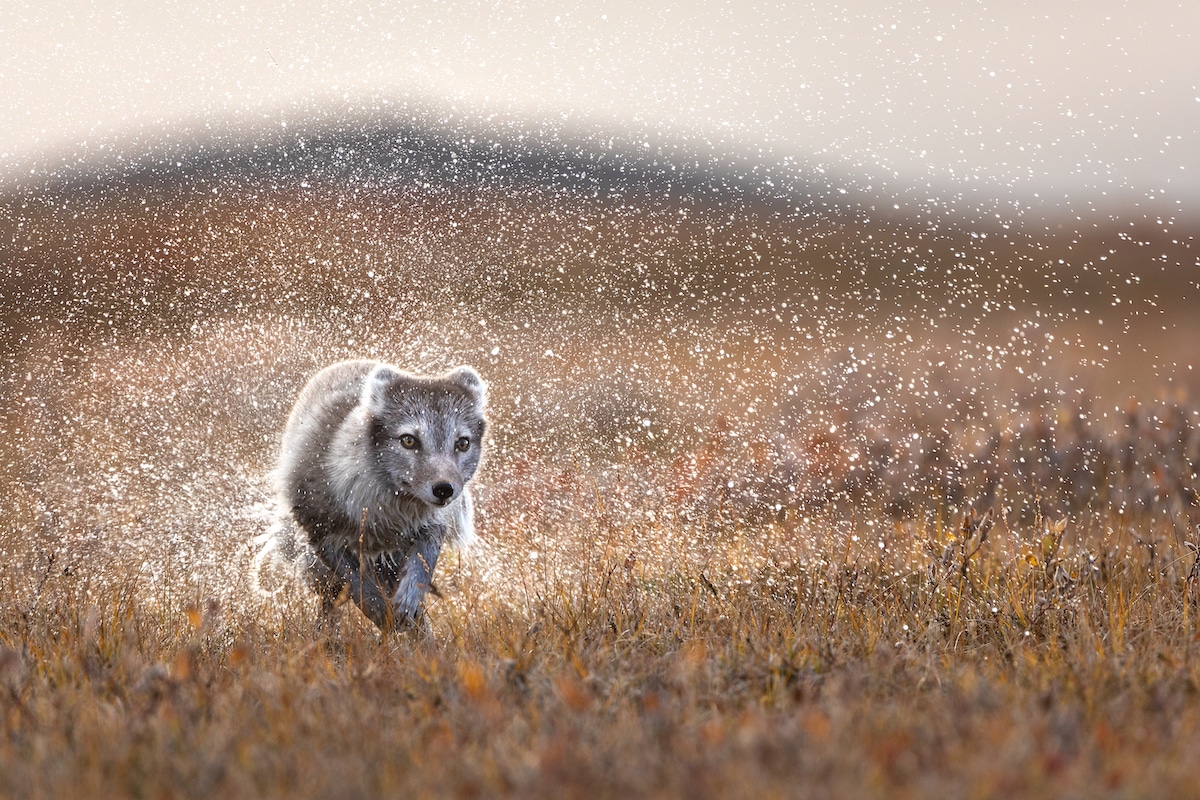
“Shake it Off” by Florian Warnecke (Germany). WET Highly Commended.Subject: Arctic Fox Vulpes lagopusThis Arctic Fox was raised by people. It is able to roam freely and wanders off for days until he or she will leave for good one day. After arriving on location, the fox swam through a stream and came out on the other side soaking wet. After a couple of steps on the other side he shook off the water.
For the WET Competition, photographers were asked to submit their best photos incorporating wildlife and water.
It’s a concept that Canadian wildlife photographerGail Bissonproposed and the results are astounding.
Snow, ice, rain, and rivers are prominent throughout the winning and highly commended photographs.
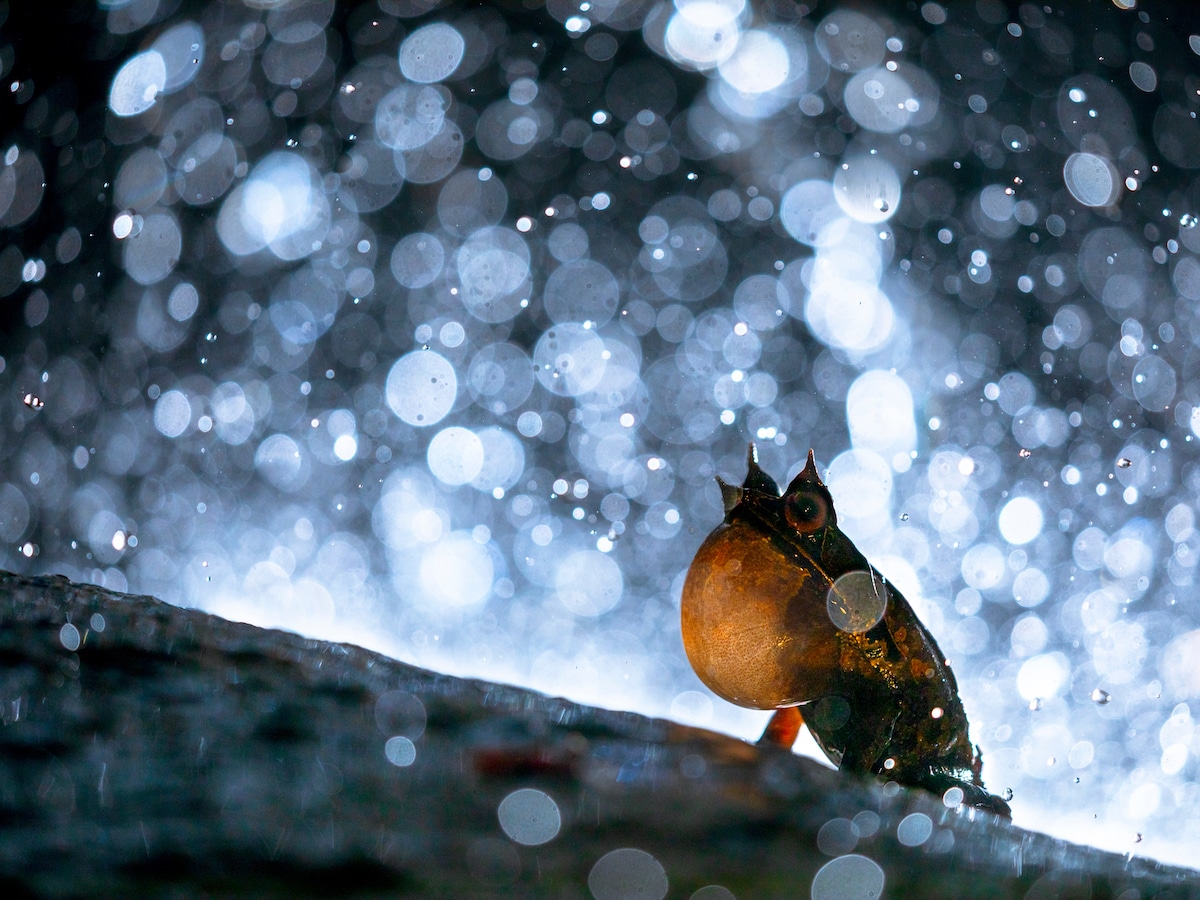
“Rainforest Echo” by Bernhard Schubert (Austria). WET Founder’s Choice.Subject: Long-nosed Horned Frog Megophrys nasutaThe Long-nosed Horned Frog is an iconic species from the South East Asian tropics. For a better resonance and a therefore longer perceiving range to attract females, this male positioned itself on an elevated rock right in front of a waterfall, calling in the direction of the rocky overhang, which concentrated the sound and reflected into the forest. I used an external flash which I positioned behind the frog and the waterfall. The frog was obviously not bothered much and continued calling.
Her powerful photo shows wildebeest splashing into the Mara River in Africa.
Her stunning capture earned her second place in the contest.
These images are just the first of many wonderful wildlife photographs that we can expect from WildArt this year.
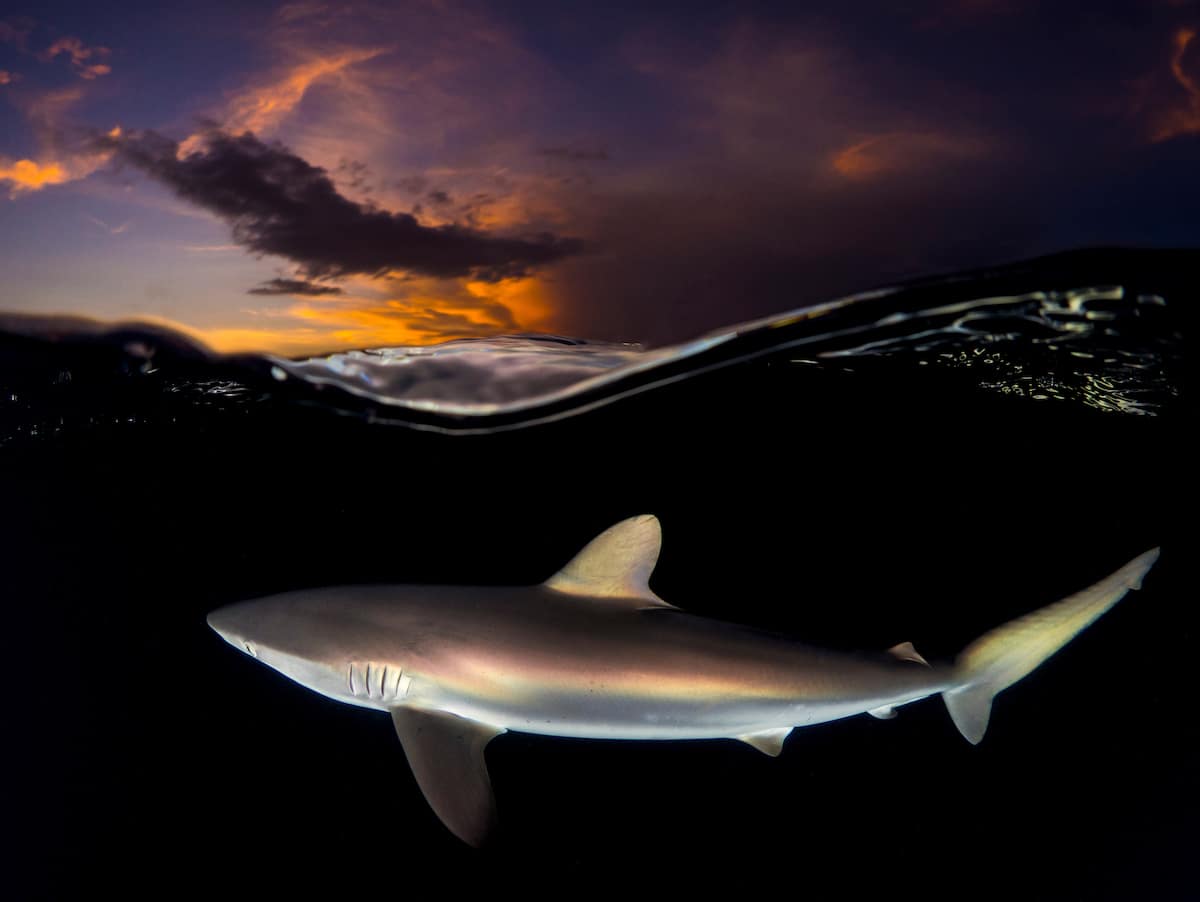
“Silky Sunset” by Sean Chinn (United Kingdom).Subject: Silky Shark Carcharhinus falciformisA silky shark swims underneath the setting sun in Jardines de la Reina, Cuba. An 8mm fisheye lens and 4 inch dome port allowed me to get this single split-shot as a Silky Shark swims close to the surface underneath a stunning sunset sky. This species is a pelagic shark that is common around Jardines de la Reina. They get excited and curious as the night draws in, frequently coming in for closer inspection of the strange humans that have entered their world.
Through October, the organization will be running monthly contests with themes selected by respected wildlife photographers.
In the meantime, there’s still time toget in your entryfor March’s Silhouette contest.
Splash Down by Vicki Jauron (USA).
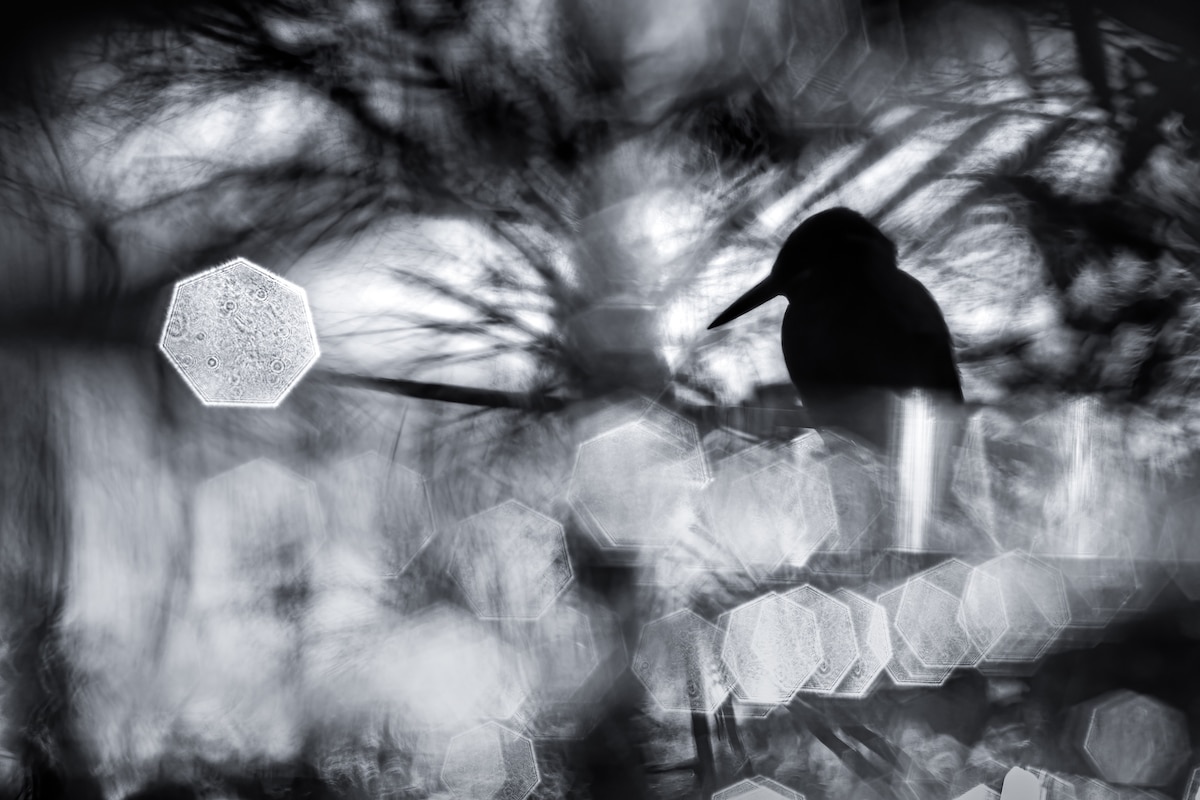
“Kingfisher Reflection” by Luca Lorenz (Germany). WET WildArt Young Category Winner.Subject: Common Kingfisher Alcedo atthisFor many weeks I observed and photographed a kingfisher that used to hang out at a pond near my home to catch fish. It was a young female that had hatched the same year. Almost every day I spent a few hours before or after school in my camouflage tent waiting for the kingfisher to appear. I got to know her behavior better and better and it made me really happy to spend as much time as possibly with the kingfisher. One day, she landed in the reeds right behind my tent. I could see her through a small gap in my camouflage tent and heard every movement. She was only about 30 cm away from my face and was looking eagerly into the water for fish. Very carefully, I lifted my tent a little to hold my camera with my very old 50mm f 1.4 lens underneath when I noticed the reflection of the kingfisher on the surface of the water. The structures of the trees as well as all the reflections of the sun combined with the silhouette of the kingfisher on the water surface looked very good to me and I took many pictures. That day I cycled home so happy.
It was one of the most memorable moments I’ve had on safari.
Shake it Off by Florian Warnecke (Germany).
WET Highly Commended.Subject: Arctic Fox Vulpes lagopusThis Arctic Fox was raised by people.
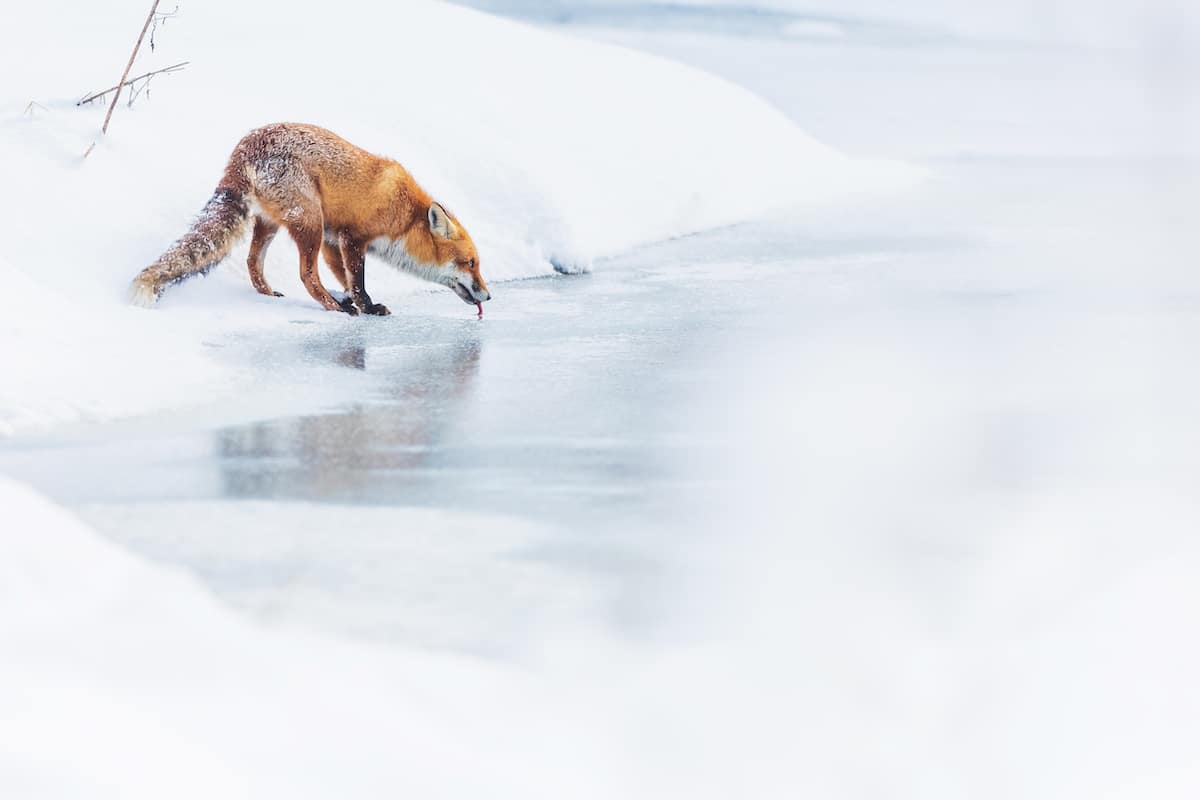
WET – HIGHLY COMMENDED “I’m Stuck!” by Lukasz Sokol (Poland). WET Highly Commended.Subject: Red Fox Vulpes vulpesDressed in several layers of clothing, accompanied by a camera and hope for winter images, I decided to go for a walk around the surrounding areas known to me, typical for a nature photographer. This was a trip without a plan, and I focused on natural “spontaneity” that later turned out to be extremely fruitful. In the distance, in a river valley overflowing with endless white, I spotted a beautifully colored red fox. I decided to follow this potential hero of my frame in a “chase”. Each step I took had to be thought out so that the creaking of snow or the branches that might be under it did not scare the animal. The fox wandered along the shore calmly, but he was not lucky that day, because the delicate ice on the shallow river broke. At a temperature of -21 degrees below zero, his fur was covered with frost in a flash. After a few meters, my ‘walrus’ found that he was tired of this winter crossing and tasted the water from the unfrozen part of the river. That was the moment to take photos of this wet and frozen fox. I set a little to minus exposure compensation so as to not overexposure the snow.
After a couple of steps on the other side he shook off the water.
Rainforest Echo by Bernhard Schubert (Austria).
I used an external flash which I positioned behind the frog and the waterfall.
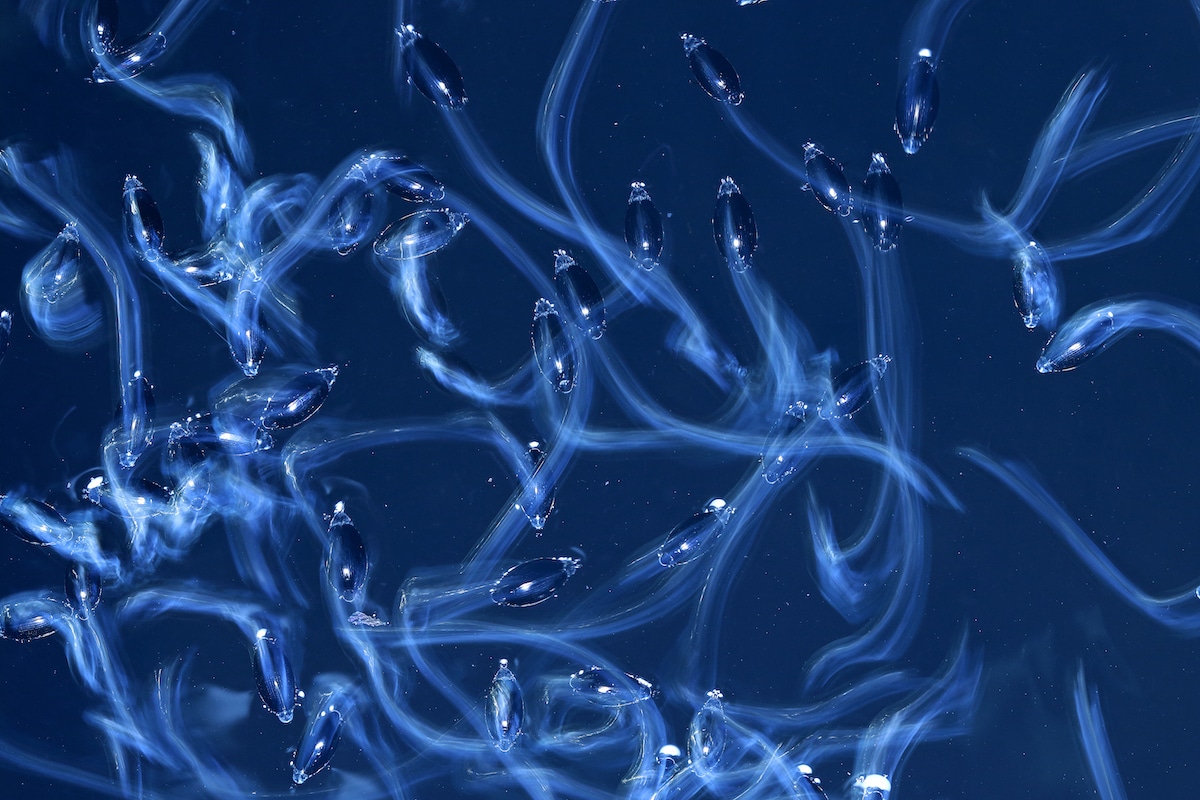
“Dancing on the Water” by Norbert Kaszás (Hungary). WET Highly Commended.Subject: Common Whirligig Beetle Gyrinus natatorI took the picture in the quieter backwater of a stream near my town. When I found these agile Common Whirligig Beetles orbiting the surface of the water, I wondered how they could be photographed as interestingly as possible. After many experiments and multiple visits, taking advantage of the fast and vibrant movement of the beetles, I found the images taken with long shutter speeds became the most spectacular.
The frog was obviously not bothered much and continued calling.
This species is a pelagic shark that is common around Jardines de la Reina.
WET is the first of 10 monthly competitions for wildlife photographers around the world.
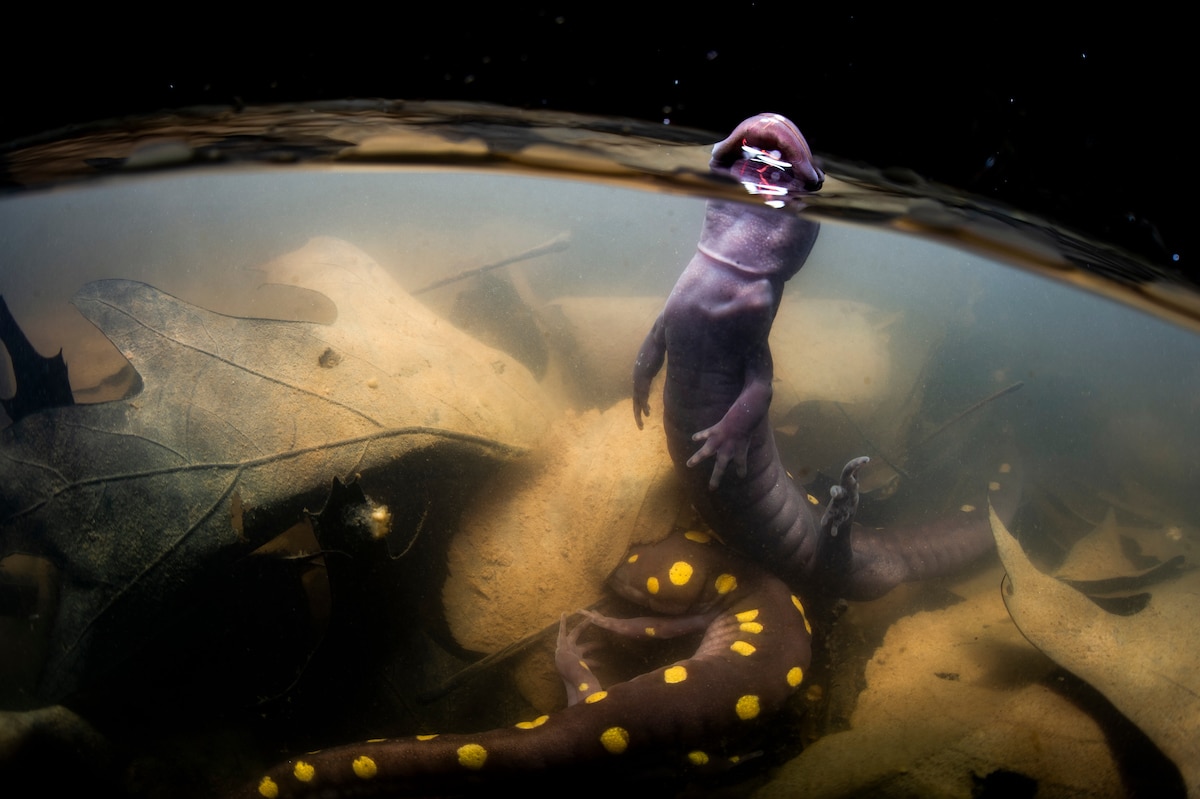
“Quick Breath” by Matthew Sullivan (USA). WET Highly Commended.Subject: Spotted Salamander Ambystoma maculatumEvery year, during the first rains of springs, Spotted Salamanders make a mass breeding migration to vernal pools. I am lucky enough to have lived close enough to a prime breeding site and seemingly tens of thousands of salamanders used the pond. I wanted to make some underwater images and, because spotted salamanders breathe air, I wanted to attempt to catch the moment one came up. It took many, many tries but eventually, I timed it correctly when this male surfaced, snatched a quick breath, and dived back to his female.
Kingfisher Reflection by Luca Lorenz (Germany).
It was a young female that had hatched the same year.
One day, she landed in the reeds right behind my tent.
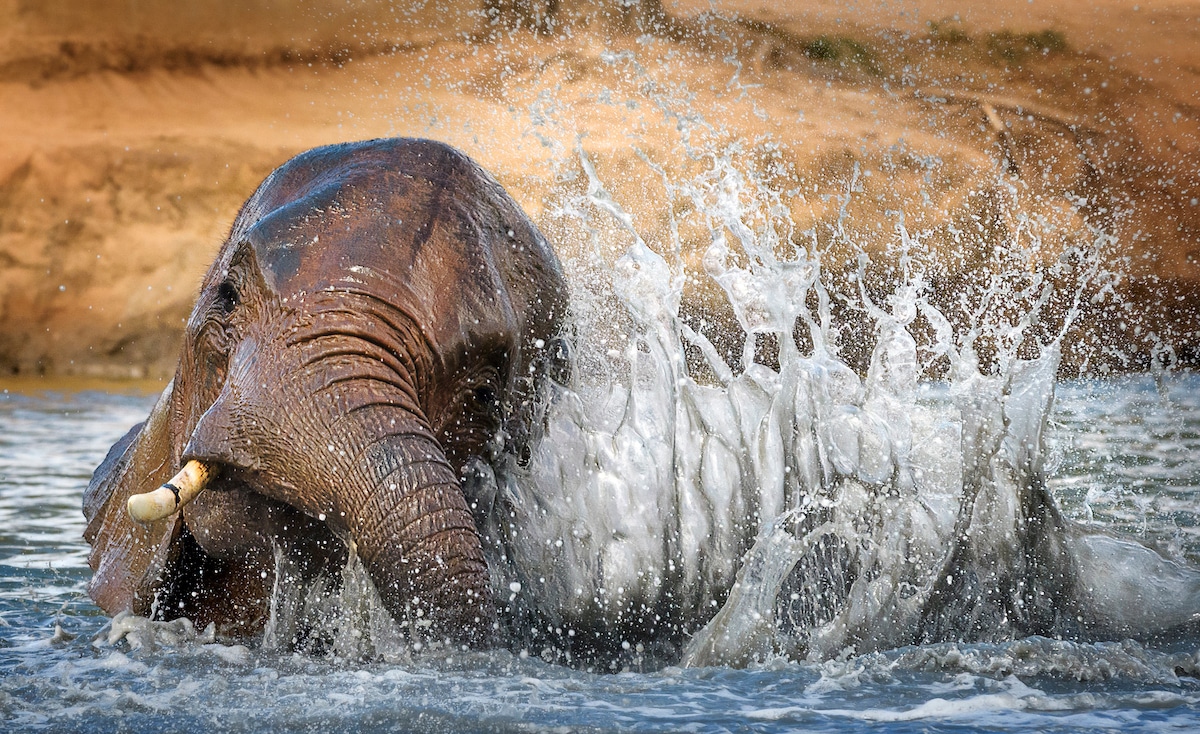
“Making waves” by Vicki Jauron (USA). WET Highly Commended.Subject: African Elephant Loxodonta africanaIt is so much fun watching young elephants at the waterhole, they are so full of life. This is one of the young elephants being reintegrated into the wild at David Sheldricks Ithumba location in Tsavo East. It was a cool day and most of the elephants decided to skip the swim, leaving the water hole open for this one splasher who truly enjoyed making waves.
I could see her through a small gap in my camouflage tent and heard every movement.
She was only about 30 cm away from my face and was looking eagerly into the water for fish.
That day I cycled home so happy.
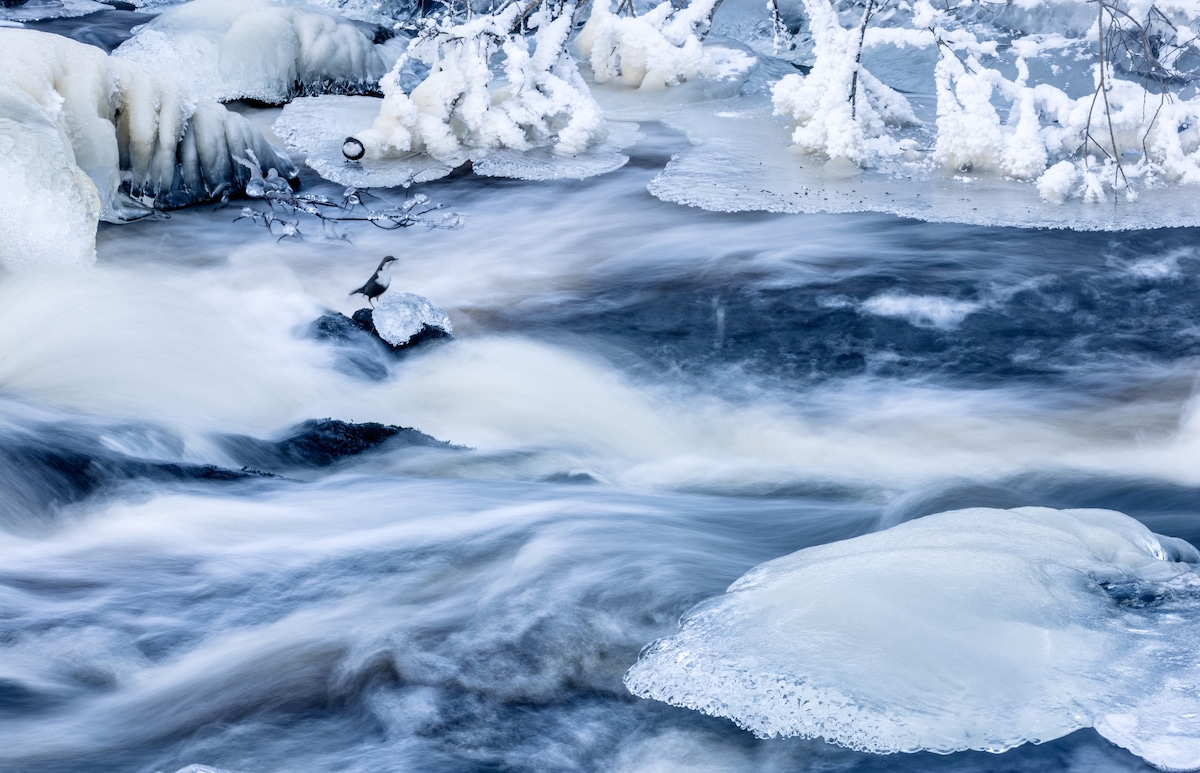
“Dippers in Frosty River” by Pål Hermansen (Norway). WET Highly Commended.Subject: White-throated Dipper Cinclus cinclusI worked with the dippers during the cold last winter. The river was decorated with monumental ice structures, and I wanted to show how the birds were a part of the iced landscape. I used a slow shutter to emphasize the motion of the water. Usually the birds were seen alone, but sometimes they met and chased each other. It could be quite cold to spend the days along the river in -20C.
WET HIGHLY COMMENDED Im Stuck!
by Lukasz Sokol (Poland).
I decided to follow this potential hero of my frame in a chase.
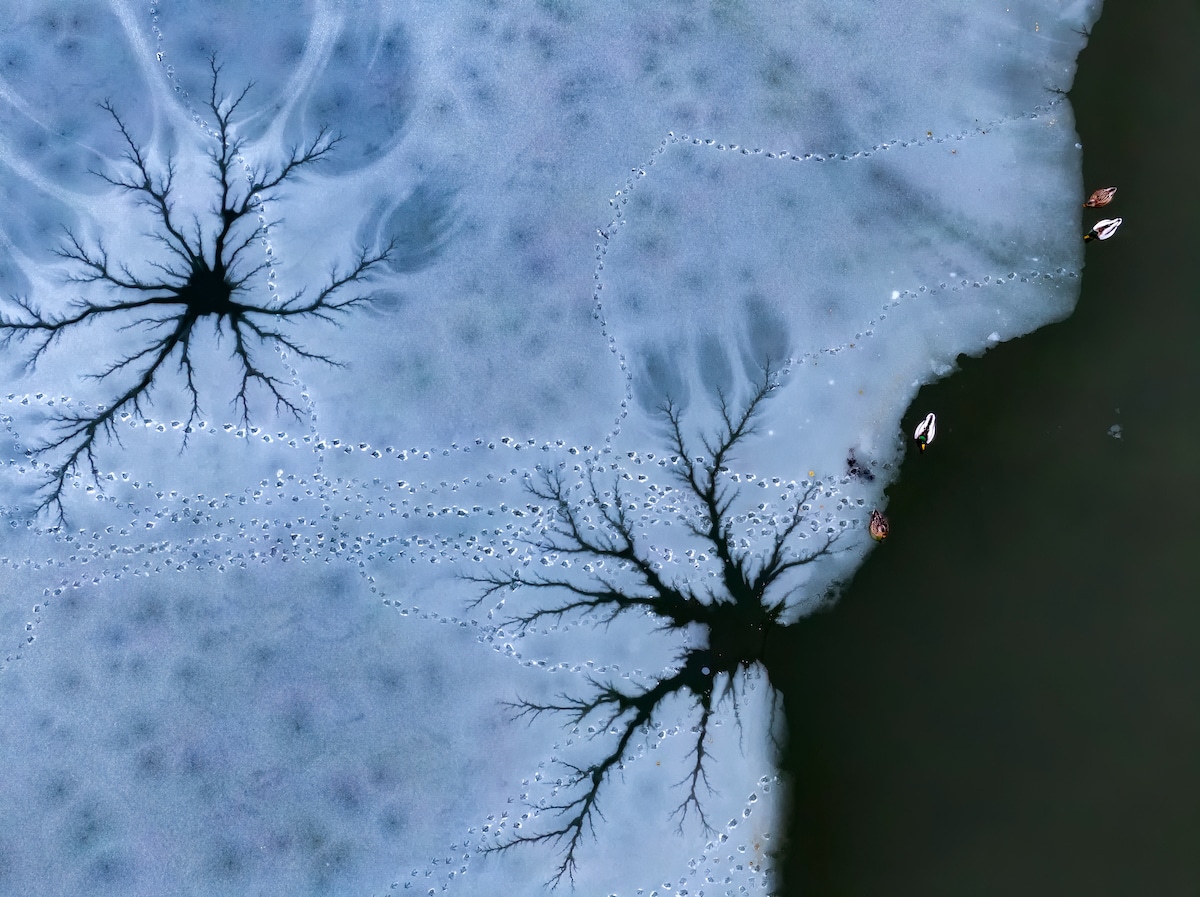
“Port” by Csaba Daróczi (Hungary). WET Highly Commended.Subject: Mallard Anas platyrhynchosThere’s a little lake near our town and in 2021, it almost completely froze over. In the ice-free area many birds gathered, and that’s what I photographed with a drone.
At a temperature of -21 degrees below zero, his fur was covered with frost in a flash.
That was the moment to take photos of this wet and frozen fox.
I set a little to minus exposure compensation so as to not overexposure the snow.
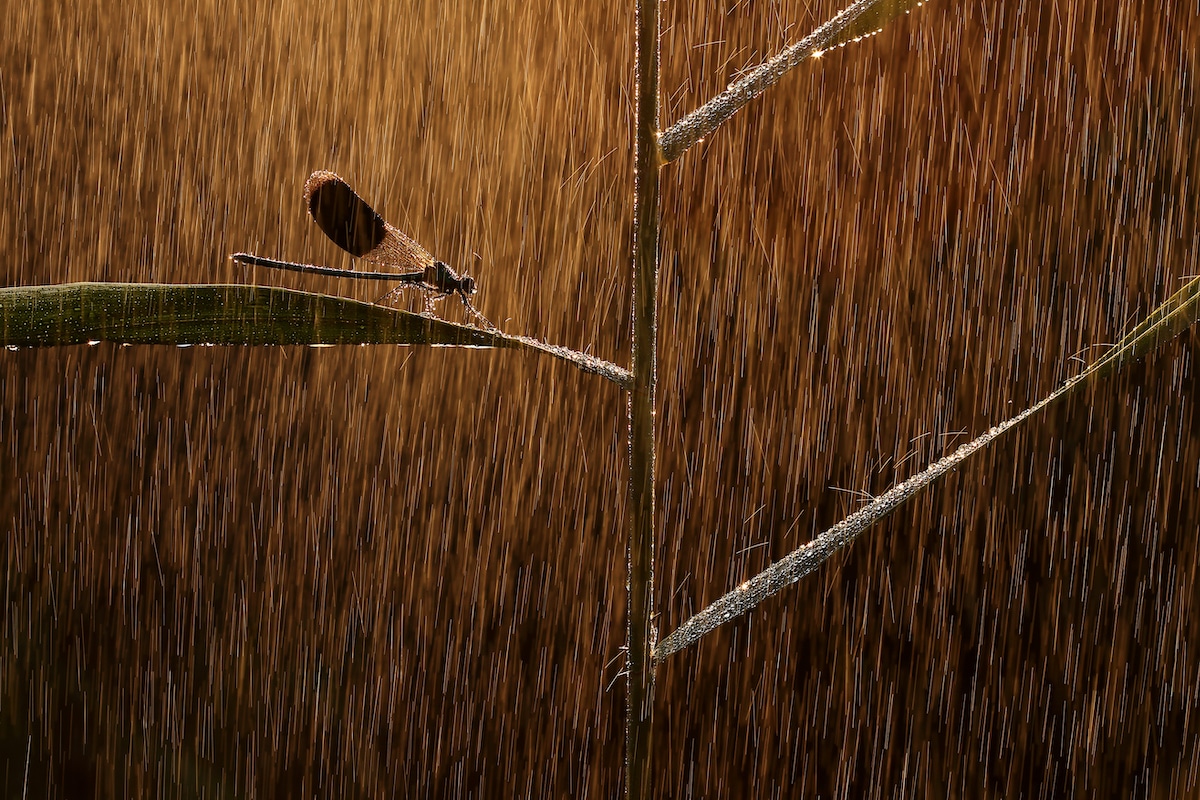
“Golden Rain” by Norbert Kaszás (Hungary). WET Bronze Award Winner.Subject: Banded Demoiselle Calopteryx splendensBanded Demoiselle Calopteryx splendens is one of my favorite species among damselflies, so I was very happy when I came across it. After spending three years searching for this species, I found a brook in the Duna-Ipoly National Park where this damselfly can be found. After finding this place, I spent all my summer photo trips there trying to capture more and more interesting compositions.
Dancing on the Water by Norbert Kaszas (Hungary).
Quick Breath by Matthew Sullivan (USA).
Making waves by Vicki Jauron (USA).
Dippers in Frosty River by Pal Hermansen (Norway).
WET Highly Commended.Subject: White-throated Dipper Cinclus cinclusI worked with the dippers during the cold last winter.
I used a slow shutter to emphasize the motion of the water.
Usually the birds were seen alone, but sometimes they met and chased each other.
It could be quite cold to spend the days along the river in -20C.
Port by Csaba Daroczi (Hungary).
In the ice-free area many birds gathered, and that’s what I photographed with a drone.
Golden Rain by Norbert Kaszas (Hungary).